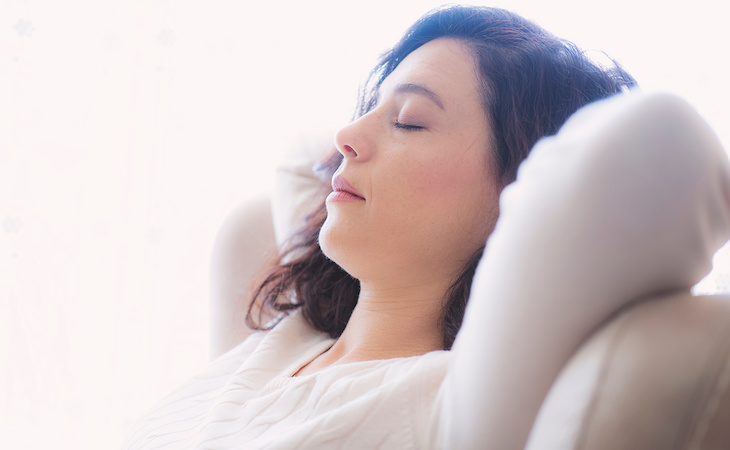There’s a good chance that ever since childhood, you’ve had a favorite sleep position. Maybe you choose to snooze on your back, side, or stomach—and perhaps you haven’t given it a second thought. But if you’re dealing with chronic back pain, it may be time to switch up your sleep position.
Can your sleeping position cause back pain?
“One’s preferred sleeping position can contribute to their back pain,” says Thomas Tozer, chiropractor at Imperium Chiropractic in Wisconsin. Sleeping on your stomach, in particular, is bad for your back, he says, because it’s hard to maintain neutral spinal alignment while in this position.
Additionally, sleeping in the same position in the same spot night after night can lead to back pain. “If someone only sleeps in one position in the same spot in a mattress, and the mattress breaks down over time, then the proper support may be lost,” explains Tozer.
Beyond sleep position and a poor mattress, Tozer cites several other sources of chronic back pain, such as sprains and strains, subluxations in the spine (partial dislocations of the joints), scoliosis, arthritis, and degenerative disc disease. These are all things that can benefit from a visit to your physician.
Whether your back pain is caused by your sleep position or something else, it can lead to major issues with being able to get a good night’s sleep. “Back pain can be a serious problem,” says Tozer. “Sleeping is a critical time for the body to be able to heal and recover from the stresses of the day. The discomfort of back pain can make sleeping difficult, and not having a proper mattress can hinder the process of healing.” (Find out whether going to a chiropractor can improve your sleep.)
The best sleep positions for back pain
Some sleep positions are truly better for you than others, and Tozer has his preferences. “I don’t recommend stomach sleeping for both low back and neck health,” he says. “I recommend side and back sleeping and varying those positions through the night.”
Sleeping on your back helps keep your head, neck, and spine in a neutral position. That takes the pressure off those areas and makes it a lot less likely you’ll wake up with aches and pains in the morning. Sleeping on your side can also help keep your spine in neutral alignment and minimize back pain.
One 2016 study focused on the effects of sleep positions on back pain in physically active seniors. After four weeks of sleeping in the recommended position (lying on the back), 90% of the participants indicated a significant decrease in back pain.
It may seem nearly impossible to train your body to adopt a sleep position that’s better for your back, but it is doable. Here are Tozer’s tips:
- Maintain a neutral posture while you sleep. “Sleep in a good, neutral posture—not curled up in a ball,” he suggests. “The head should be in line with the body, especially when sleeping on your side.”
- Choose the right pillow for your new sleep position. Once you have an awareness of how your spine feels when it’s in a neutral position, you can reconsider your pillow. Tozer stresses that it’s essential to use “the proper pillow depending on your sleeping position or positions.” (Read our guide to choosing the best pillow for your sleep position and learn when to replace your pillows.)
- Use pillows in creative ways for added support. There’s another way you can utilize a pillow to aid in improved sleep positioning. Tozer recommends sleeping with a pillow between your knees while sleeping on your side and behind your knees if sleeping on your back. That will add comfort and help with maintaining a neutral spine. (Learn how to make your bed and layer your pillows for more comfortable sleep.)
In addition to reconsidering your sleep position, you should also evaluate your current mattress and decide if it’s time to purchase one that could be a lot kinder to your back. Look for “one that offers proper support and adequate comfort,” Tozer explains. (Learn about mattress lifespan here.)
Bonus tips for dealing with back pain
If you’re dealing with back pain, your sleep position may only be one piece of the puzzle. High-quality sleep and other good habits can boost your overall health, which, in turn, may alleviate your aches and pains. Tozer offers these strategies:
- Stretching before bedtime and doing some stretching before getting out of bed
- Icing the painful area for 20 to 30 minutes before bed
- Creating proper sleeping patterns, which involve going to bed at the same time every night
- No screen time or TV 20 minutes before bedtime
- Not eating within two hours of bedtime
And remember, you can always seek out an expert opinion to help you navigate your back pain and the sleep positions that may be contributing to it. “Have a proper evaluation of your back pain so you can treat the cause,” Tozer says.







